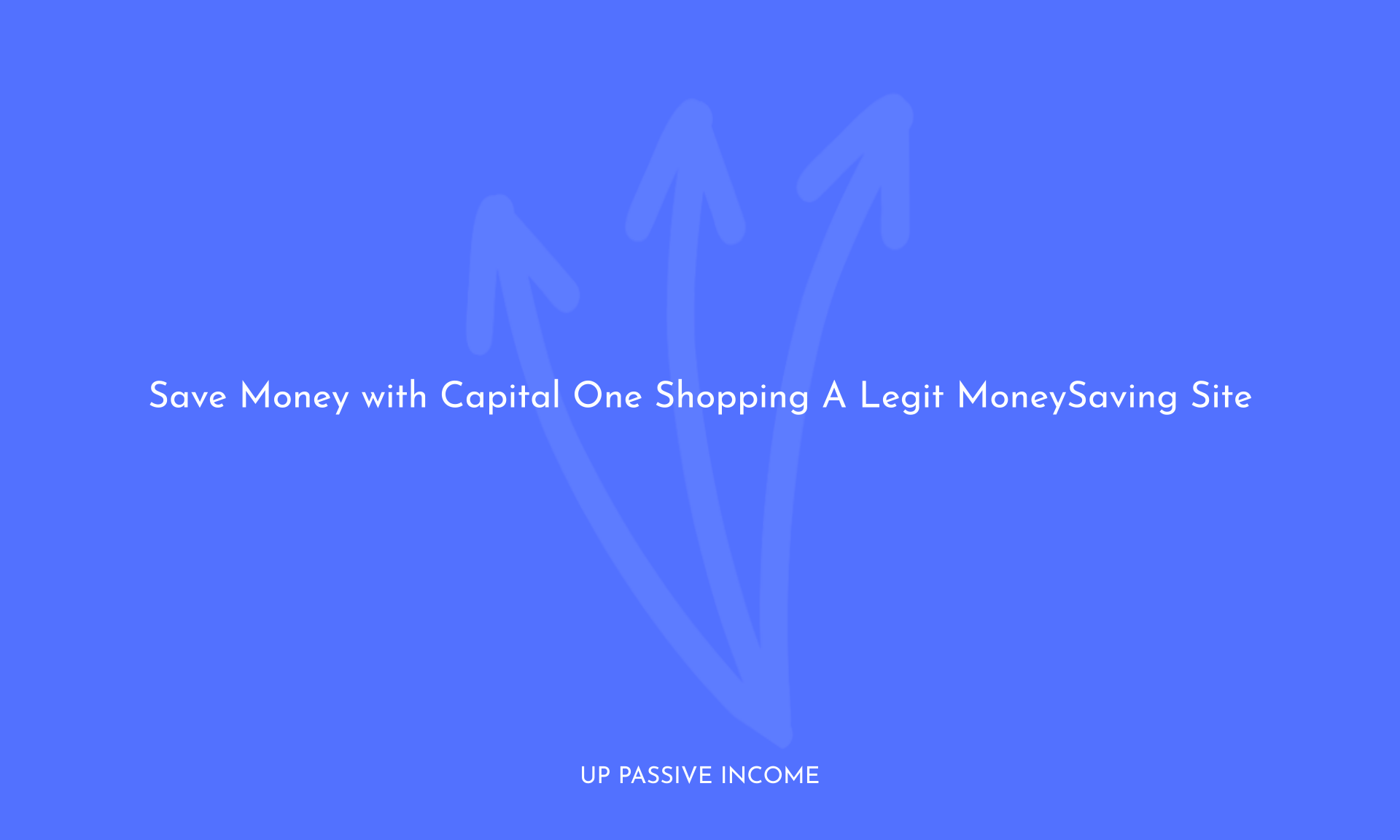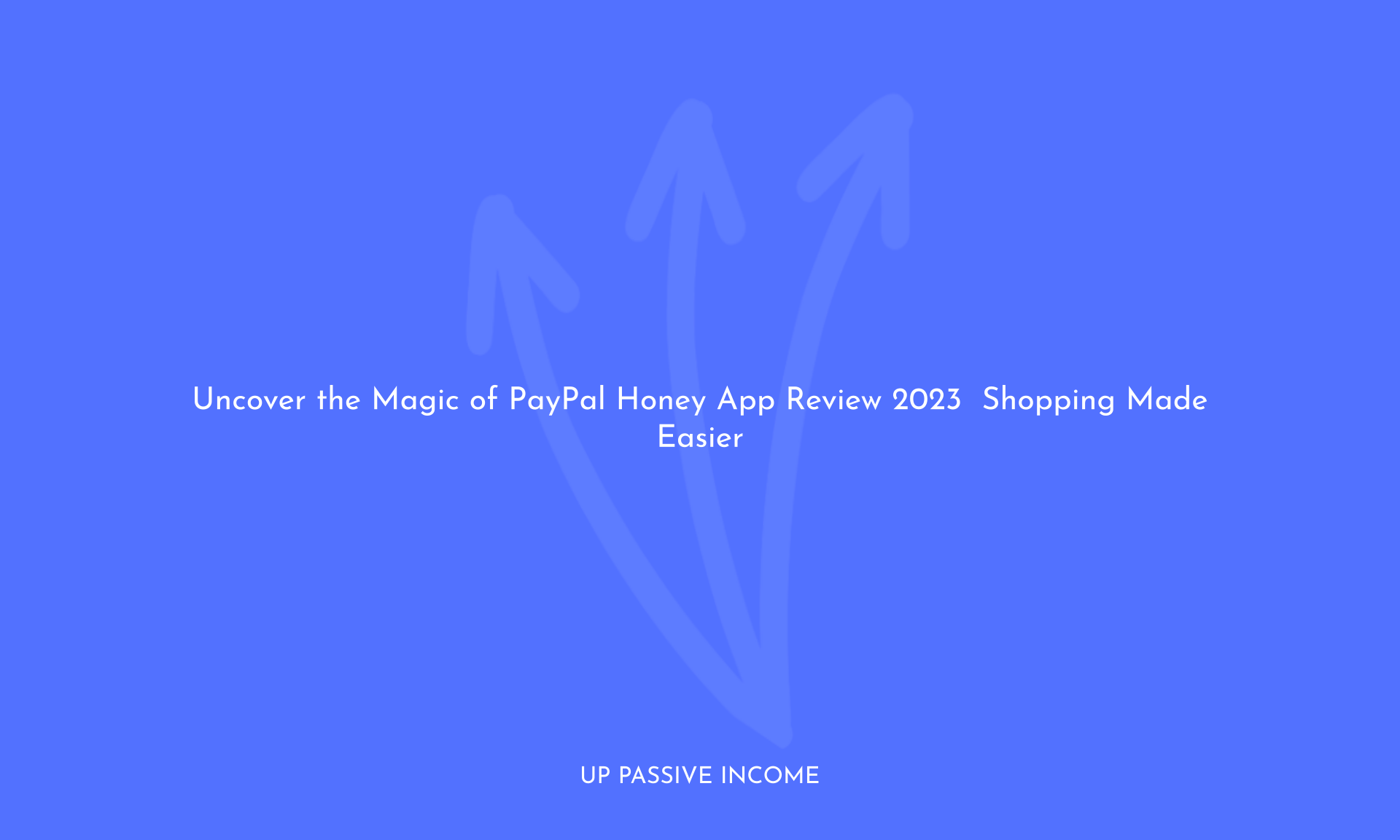Both Robinhood and M1 Finance have their selling points, and the better one is the one that best fits your overall investment strategy.
Explore the key differences between M1 Finance and Robinhood to determine which platform aligns best with your unique investment strategy. This comprehensive comparison will help you make an informed decision and seize maximum investment opportunities.
M1 Finance and Robinhood are two incredibly popular investing apps with millennials. While Robinhood is the undisputed winner of the first app to market to offer commission-free trading, M1 Finance is a contender that joined the ranks a few years later.
Both apps are available for both Apple and Android devices. They offer many similar products and features aimed at addressing the DIY new investors, but their approach can be somewhat different.
Understanding these differences can help you decide which option is best for you and this is what this article is all about.
In this article, Ill be looking at what each app has to offer and how they compare with each other.
Table of Contents
M1 Finance vs. Robinhood: App Features
Both M1 Finance and Robinhood are mainly accessed through apps, so lets spend some time comparing them. After all, usability and accessibility can go a long way in helping you make the most out of it.
Both M1 Finance and Robinhood have Android and iOS apps with overall good and healthy reviews. Both platforms also allow you to login using a web browser perfect if you need a bigger screen with more estate to do certain tasks. Both investing apps are free to download irrespective of the device you own.
M1 Finance Mobile App
The M1 Finance app features a very straightforward design philosophy with modern colors. Everything is easily accessible and intuitive. It offers access to all of the features and functionality that you might need to invest in.
Robinhood Mobile App
The Robinhood mobile app, on the other hand, offers easy access to your account, allows you to keep tabs on performance and view charts. You can also set up watchlists and trade some asset classes and different order types with this trading app.
Verdict
Both apps are easy and intuitive to use, though Robinhood seems to be a bit more beginner-friendly if youre very new to investing. As a trading platform, Robinhood is super easy to use to buy and sell stocks. M1 Finance offers more functionality through the app, while Robinhood will require you to log in from your computer to access the entire set of features it offers.
M1 Finance vs. Robinhood: Products and Account Options
M1 Finance and Robinhood come with a different set of products and account options. Understanding what they each offer can help you determine whether M1 Finance or Robinhood is the best solution for you.
In this section, we will deep-dive into what they have to offer to give you a better understanding of what they are about and what you can expect.
M1 Finance
M1 Finance offers three products M1 Invest, M1 Borrow, and M1 Spend.
You can also choose between the Basic M1 Account and the M1 Plus Account. Regardless of which type of account you choose, Basic or Plus, you will get access to all three products. Do keep in mind that the rates you pay will be different. Ill talk more about these in the Fees section.
Lets now have a look at the different products on offer by M1 Finance.
M1 Invest
M1 Invest is the main product and is what M1 Finance is all about. Through M1 Invest, you can build your own portfolio of investments choosing your preferred investment strategy, stocks, and account type.
In fact, there are four account types you can choose from depending on your needs and investment goals. The account types available are
- Individual: This is a general taxable account for investors setting up an account under their name
- Joint: This type of account lets you set up one shared account with a spouse, partner, or relative
- IRA: Choose between Traditional IRA, Roth IRA accounts, and SEP IRAs
- Trust: If you have a trust to manage, this is the account that you will need to choose
Using M1 Invest, you can invest in a number of stocks and funds. There are over 6,000 of them to choose from. There are also fractional shares. This lets you purchase fractions of shares, which are very expensive to buy. By buying a fraction of a share, you can still own stock from big-name companies.
You can also choose from more than 80 pre-configured expert portfolios perfect if you want to invest but not sure from where to start.
There is one thing that you need to be aware of. With M1 Invest, you get one trading window. This is set at 10:00 AM Eastern time. Because of this, there might be a price deviation when it comes to buying or selling since the order will go through at that specific time at the price it has during that window.
M1 Borrow
M1 Borrow lets you borrow on margin up to 35% of the value of your portfolio. You need to have a minimum portfolio worth $10,000. The interest rate is based on the Federal Reserve base rate and is set at 3.5% for the M1 Basic Account. This drops to 2% for the M1 Plus account.
M1 Borrow comes with many great features. These are available with both Basic as well as Plus accounts. Here are some of the features you can look forward to when making use of M1 Borrow.
- No Paperwork There is no paperwork to fill in, everything is done through the app
- No Payment Schedule There is no fixed payment timetable to keep up with
- Easy Borrowing It takes less than 10 seconds and just three clicks to borrow money
M1 Spend
With M1 Spend, you get a checking account that is FDIC-insured and $0 balance minimum. The FDIC insurance covers you up to $250,000, and you get one ATM fee reimbursement per calendar month.
You can use your M1 Spend checking account to place direct deposits, transfer money, and spend with the M Finance branded debit card. It is also worth noting that M1 Spend integrates with the rest of the M1 Finance product suite so you can move money around your portfolio as required.
M1 Spend includes a number of features straight out the box. Other features, as previously discussed, are only available when you upgrade to an M1 Plus account. These include APY and cashback on qualifying purchases. Regardless of the type of account you have, these are the features you can look forward to with M1 Spend.
- No account minimum. There is no minimum balance you need to hold in your account
- FDIC insurance. Your M1 Spend checking account is covered up to $250,000 by the FDIC
- Integration. Your M1 Spend checking account is integrated with your investment account
M1 Plans
M1 Finance offers two types of accounts: M1 Plus and M1 Basic.
The M1 Basic account is free of charge. Should you wish to upgrade to M1 Plus, you will need to pay $125 per year. The $125 yearly fee gets you access to a number of features and better rates. This means that depending on how you plan to use the account, you might want to upgrade (or not).
Here are the extra features and options you get with an M1 Plus account
Feature 1: Second trading window
- We discussed earlier that M1 Finance accounts come with one trading window, which is set at 10:00 AM (ET). Upgrade to an M1 Plus account, and you will get access to a second window at 15:00 (3 PM) Eastern Time.
Feature 2: Cashback
- Use the M1 Spend debit card to get 1% cash back on qualifying purchases. There are no limits to how much cash back you can get.
Feature 3: APY
- Your APY (Annual Percentage Yield) on an M1 Spend checking account is set at 1%. This is set as 0% if you have an M1 Basic account.
Learn More:
- Read our full M1 Finance Review.
Robinhood
Robinhood shook the world of investing by offering its users an unlimited number of free trades on stocks, mutual funds, ETFs, and options in a brokerage account.
This was back when youd need to pay stockbrokers every time you bought or sold a stock. The free stock trading proposition and Robinhoods mission to make investing accessible and affordable was new and unheard of.
Robinhood structures its offering a little bit differently. They have four products Stocks & Funds, Options, Cash Management, and finally, Crypto.
Robinhood accounts come in three levels: Robinhood Cash, Robinhood Instant, and Robinhood Gold. We will now look at the products and account options available with a Robinhood account to help you better understand what is on offer and whether Robinhood is the right company for you.
Stocks & Funds
With Stocks and Funds, you can make an unlimited number of trades. You can also invest in ETFs. ETFs is an acronym for Exchange Traded Funds, which is basically a collection of assets such as stocks, bonds, and commodities.
With Robinhood, you can also invest in fractional shares, but this is not yet active at the time of writing. With fractional shares, you can buy a fraction of a share instead of a whole one. This is typically used for shares whose price is very high. By purchasing fractional shares, you can get involved with stock trading and buy stock of big-name companies (like Amazon, for example) without the big price tag.
Options
Options, as the name suggests, give you the option to buy or sell an underlying asset. The underlying asset can contain a number of stocks as well as commodities as well as currency. Generally, options are used for speculation and risk-hedging. Robinhood does recommend some experience before trading in options. They also supply plenty of documentation if you want to learn more about this type of investing.
Crypto
With Robinhood Crypto, you can buy and sell several cryptocurrencies, including Bitcoin, Dogecoin, Ethereum, and many others. Cryptocurrency trading is available 24 hours a day, seven days a week, and is commission-free.
Cash Management
Cash Management is an upcoming product. It offers a high APY (Annual Percentage Yield) and comes with a Robinhood Mastercard. They will move your money to different banks who will actually pay the interest, which is paid to you monthly.
Robinhood Plans
When you first open a Robinhood account, you start with a Robinhood Instant account. This gives you access to margin trading, instant deposit from your bank account as well as trading during extend-hours. You can downgrade to Robinhood Cash at any time. Do keep in mind that by doing so, you will lose access to instant deposits and settlements, however.
Robinhood Gold is the top-tier account and costs $5.00 per month. Here you will get all of the features of the Robinhood Instant account plus a few extras. These include additional buying power as well as larger deposits. You also get access to Morningstar as well as L2 market data.
Learn More:
- Read our full Robinhood Review.
Verdict
Robinhood offers more flexibility in investment options and, as such, can be a better option for investors who want to be more active in the management of their portfolio.
M1 Finance, on the other hand, might be a better option for those who want a hands-off approach. Many of Robinhoods products are still on a waiting list basis, so it can be difficult to judge how good they will be.
If these features are a deal-breaker, then M1 might be a better option for you at this time.
M1 Finance vs. Robinhood: Fees
Trading stocks is commission-free, but that does not mean there are no fees whatsoever when using M1 Finance or Robinhood. The number of fees you will have to pay will largely depend on how and what for you will use your account.
As we mentioned earlier, Robinhood was the first investing app to offer commission-free trading, but soon enough, the competition caught up, and today there are many alternatives in this space. M1 Finance also offers commission-free trading.
| M1 Finance | Robinhood | |
| Account types | Individual, Joint, IRA, Trust | Individual, IRA |
| Trading commission | 0% | 0% |
| Standard Account | $0 | $0 |
| Upgraded Account | $125 per year | $5 per month |
| Cash Account | Yes | Yes |
| Minimum Balance | $0 | $0 |
| Cashback | 1% | 0% |
| Margin Trading | Yes | Yes |
| Rate | 35% of the account | 5% |
Verdict
M1 Finance has a higher fee for the upgraded account but offers more bang for the buck. Of course, if you do not need the features, then the money might be put to better use if invested.
Both M1 Finance and Robinhood cash accounts are FDIC-insured, so you can put your mind at ease that they are as safe as can be.
M1 Finance vs. Robinhood: Investment Opportunities
M1 Investment Opportunities
M1 Finance offers more than 6,000 securities. These include stocks and EFTs listed on NASDAQ, NYSE, and BATs. When it comes to purchasing securities, M1 Finance uses a pie system. You can choose between Custom Pies and Expert Pies
M1 Finance Custom Pies
When setting up a Custom Pie, you choose the stocks and EFTs you want, then assign a percentage of the portfolio for each one. You can have up to 100 stocks and EFTs in a single pie. When using custom pies, you should have an idea of the stocks you are investing in and hedge accordingly. If youre looking for a more passive investing strategy, then Expert Pies might be a better option for you.
M1 Finance Expert Pies
Think of Expert Pies as pre-configured pies that follow industry-standard investing methodologies. They take the guesswork out of how you should allocate and distribute your pies by letting the experts do the work for you. There is no limit to how many Custom or Expert Pies you can have, and you can have a mixture of both.
Robinhood Investment Opportunities
Robinhood, on the other hand, offers a few different types of investment opportunities. They do not use the pie system as M1 Finance does. Instead, you have a number of different investment opportunities and order types to choose from.
Robinhood Investment Types
- Stocks: Stocks of major companies listed on US exchanges including NASDAQ and NYSE
- ETFs: Funds traded on US exchanges including NASDAQ and NYSE
- Options Contracts: Available on the above stocks and ETFs
- Cryptocurrencies: A number of cryptocurrencies are available but not available in all states
- ADRs: There are ADRs for more than 250 global companies that trade on a number of US exchanges
Robinhood Order Types
- Market Order: This type of order is filled when the next best price is reached
- Limit Order: Maximum buy and minimum sell price ceilings
- Stop Loss Order: Buy or sell when a specific price is reached
- Stop Limit Order: Triggers a limit order when a specific price is met
Verdict
Robinhood offers a greater degree of control over how you invest your money. M1 Finance takes a different approach, with robo-advisors doing most of the work.
The addition of M1 Finances Expert Pies can help you invest like a pro this can be an especially useful feature if youre just starting out in the world of investing. Even so, you should still do your research to understand how your money is being invested.
FAQs
Which is better Robinhood or M1 Finance?
Both Robinhood and M1 Finance have their selling points, and the better one is the one that best fits your overall investment strategy. If youre a long-term investor who would rather take the hands-off approach, then M1 Finance might be the better option for you. If you prefer to have a greater degree of control and do your research, then Robinhood might make more sense for you.
Is M1 Finance better than Robinhood?
M1 Finance used to have more features, including ability to invest in retirement accounts (like IRAs), but Robinhood has really caught up in the last couple of years. Just recently they announced Robinhood Retirement that offers a 1% on your retirement investments. Learn more about it here.
M1 does offer better APY rates and even has a cash back program, but this is only applicable if you intend to make use of the cash account. If you intend to make use of the extra features, M1 offers it can be better than Robinhood, but take the time to understand what you want to accomplish from your investments. This is important as Robinhood has its advantages as well, including different account types and flexibility.
Is M1 Finance safe?
Yes, M1 Finance is safe. It is regulated by FINRA (Financial Industry Regulatory Authority), with all cash accounts insured by the FDIC.
How do I switch from Robinhood to M1 Finance?
You can transfer stocks out of your Robinhood account, but there is a $75 dollar fee to do so. Once all of your assets are transferred out of your Robinhood account, your account will be closed. Robinhood does recommend getting in touch with your new brokerage (M1 Finance, in this case) to make sure the process goes as smoothly as possible.
M1 Finance vs Robinhood



